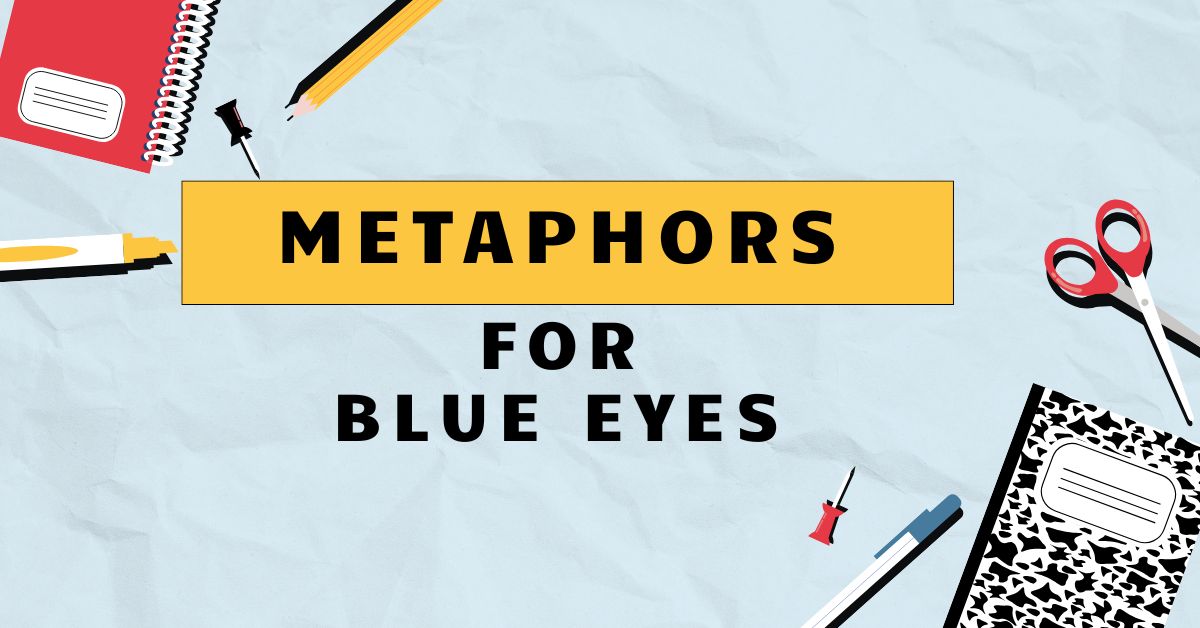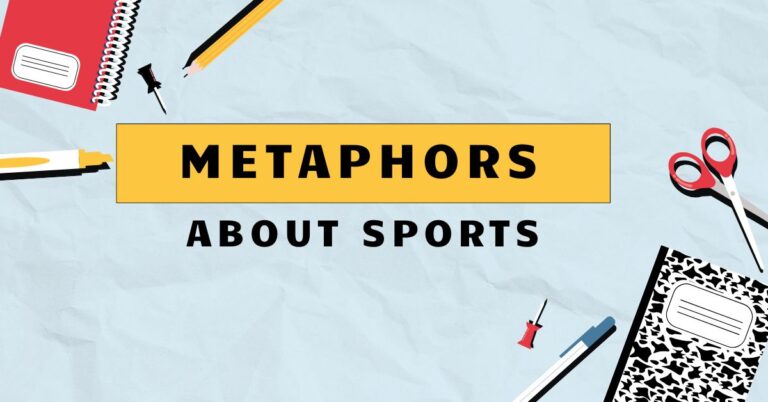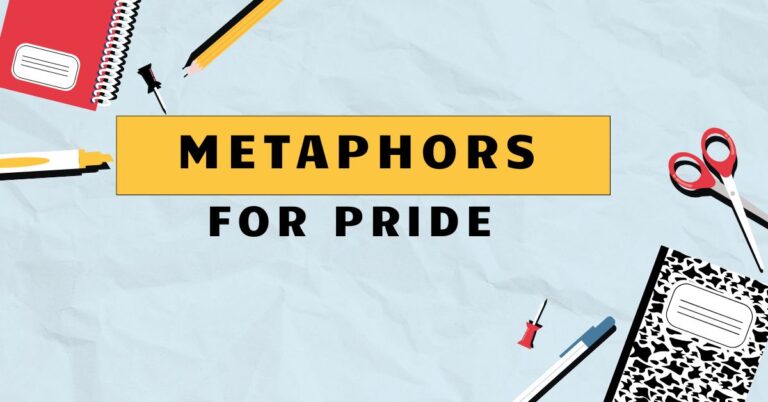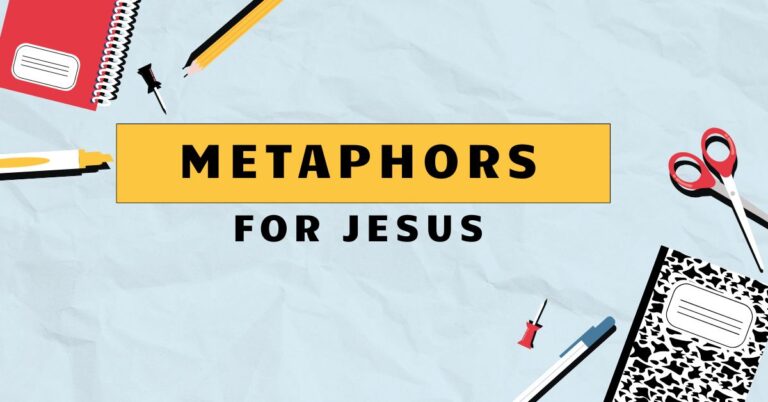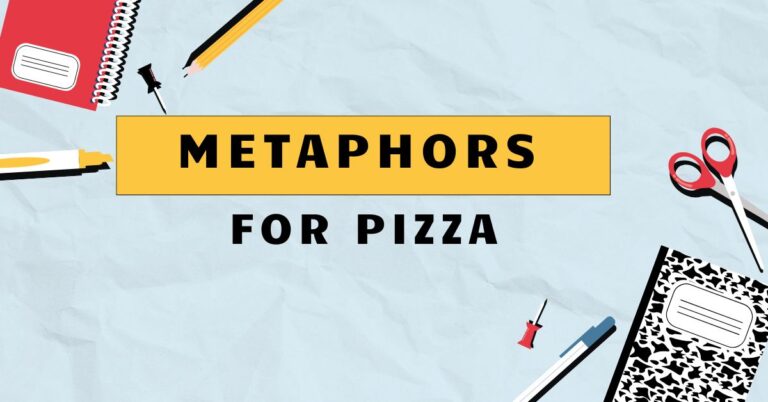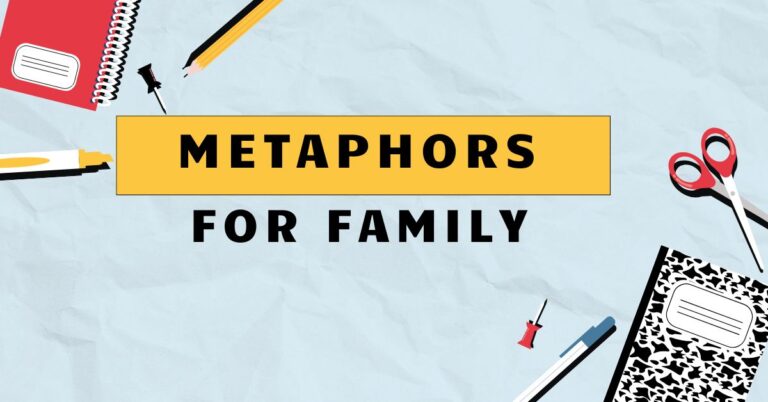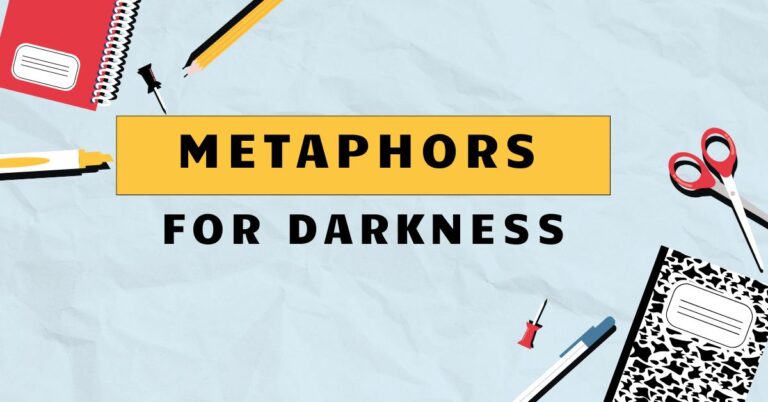47 Metaphors for Blue Eyes: A Comprehensive Guide
Metaphors are powerful tools in the English language, allowing us to paint vivid pictures and evoke strong emotions through indirect comparison. When describing someone’s blue eyes, metaphors can elevate simple descriptions into evocative portraits.
This article provides a comprehensive exploration of metaphors for blue eyes, examining their structure, types, usage, and common pitfalls. Whether you’re a student, writer, or simply an enthusiast of language, this guide will enhance your understanding and appreciation of metaphorical language.
This detailed exploration aims to give you the knowledge to express yourself more vividly and accurately, enriching both your writing and your comprehension of English literature.
Table of Contents
- Introduction
- Definition of Metaphor
- Structural Breakdown of Metaphors for Blue Eyes
- Types of Metaphors for Blue Eyes
- Examples of Metaphors for Blue Eyes
- Usage Rules for Metaphors
- Common Mistakes with Metaphors
- Practice Exercises
- Advanced Topics in Metaphorical Language
- Frequently Asked Questions
- Conclusion
Definition of Metaphor
Ametaphoris a figure of speech that directly compares two unrelated things without using “like” or “as.” It asserts that one thingisanother, creating a connection based on shared qualities or characteristics. Unlike similes, which make explicit comparisons, metaphors imply a resemblance, inviting the reader or listener to understand the subject in a new light.
Metaphors enrich language by adding layers of meaning and emotional resonance, making descriptions more vivid and engaging. Understanding metaphors is crucial for interpreting literature, poetry, and everyday communication.
The function of a metaphor extends beyond mere description; it serves to illuminate hidden aspects of the subject, evoke emotions, and create a memorable image in the mind of the audience. By associating blue eyes with something else, such as the ocean or the sky, we transfer the qualities of the ocean or sky (vastness, depth, serenity) to the eyes themselves.
This process enhances our understanding and appreciation of both the subject and the comparative element. Context plays a vital role in the interpretation of metaphors; the surrounding words, the speaker’s intent, and the cultural background all contribute to shaping the metaphor’s meaning.
Structural Breakdown of Metaphors for Blue Eyes
A metaphor consists of two primary elements: thetenorand thevehicle. The tenor is the subject being described (in this case, blue eyes), while the vehicle is the object or concept used to describe the tenor (e.g., the ocean, the sky).
The connection between the tenor and the vehicle is not literal but is based on shared attributes or associations. Understanding this structural relationship is crucial for crafting effective and meaningful metaphors.
The effectiveness of a metaphor depends on the strength and relevance of the connection between the tenor and the vehicle.
In the context of metaphors for blue eyes, the structural pattern can be visualized as follows: Blue Eyes (Tenor) = Ocean/Sky/Gemstone/Ice (Vehicle). The vehicle brings its associated qualities (e.g., the ocean’s depth, the sky’s vastness, the gemstone’s sparkle, ice’s clarity) to the tenor, thereby enriching the description of the blue eyes.
The key is to select a vehicle whose qualities align with the desired effect or impression. For example, comparing blue eyes to a stormy sea evokes a different feeling than comparing them to a tranquil lake.
The context and intended meaning always guide the selection of the appropriate vehicle.
Types of Metaphors for Blue Eyes
Metaphors for blue eyes can be categorized based on the types of imagery they evoke. Here are some common categories:
Nature-Based Metaphors
These metaphors draw inspiration from the natural world, particularly elements like the ocean, sky, and gemstones. They often emphasize the color, depth, and beauty of blue eyes.
Nature provides a rich source of imagery that resonates with many people, making these metaphors accessible and evocative. The vastness and beauty of nature can effectively convey the captivating qualities of blue eyes.
Elemental Metaphors
These metaphors use elements like fire, water, earth, and air to describe blue eyes, focusing on their coolness, fluidity, or intensity. Elemental metaphors can be particularly powerful in conveying the dynamic and transformative qualities of the eyes.
The use of these metaphors often adds a layer of depth and complexity to the description.
Emotional Metaphors
These metaphors connect the color of the eyes to specific emotions, such as sadness, joy, or peace. They emphasize the emotional impact of the eyes rather than their physical appearance.
Emotional metaphors can create a deeper connection with the reader by tapping into universal human experiences. These metaphors often require a more nuanced understanding of both language and emotion.
Abstract Metaphors
These metaphors use abstract concepts, such as dreams, memories, or ideas, to describe blue eyes. They are often more complex and require a deeper level of interpretation.
Abstract metaphors can add a layer of intellectual depth to the description, inviting the reader to contemplate the meaning behind the words.
Examples of Metaphors for Blue Eyes
Here are several examples of metaphors for blue eyes, categorized by the type of imagery they evoke. Each category provides a range of options to suit different contexts and desired effects.
The examples illustrate the diversity and versatility of metaphorical language.
Ocean and Sky Metaphors
Ocean and sky metaphors are popular choices for describing blue eyes, emphasizing their depth, vastness, and serenity. These metaphors often evoke feelings of peace, tranquility, and wonder.
The connection between the color blue and the ocean or sky is naturally intuitive, making these metaphors easily accessible and relatable.
The following table provides examples of ocean and sky metaphors:
| Metaphor | Explanation |
|---|---|
| Her eyes were twin oceans. | Emphasizes the depth and vastness of her eyes. |
| His eyes were a summer sky. | Conveys a sense of calm and endlessness. |
| Her gaze was like a tranquil sea. | Suggests a peaceful and serene quality. |
| His eyes held the depth of the Aegean. | References a specific sea, adding cultural richness. |
| Her eyes mirrored the azure sky. | Highlights the color and reflective quality. |
| His eyes, a boundless expanse of cerulean. | Emphasizes the limitlessness and specific shade of blue. |
| Her eyes were pools of oceanic tranquility. | Conveys a sense of peace and calm. |
| His eyes reflected the vastness of the open sky. | Highlights the expansive nature of his eyes. |
| Her eyes held the secrets of the deep sea. | Suggests mystery and hidden depths. |
| His eyes, like a clear, cloudless sky, were inviting. | Highlights the clarity and welcoming nature of his eyes. |
| Her eyes were as blue as the Mediterranean Sea on a clear day. | Uses a specific location to enhance imagery. |
| His eyes were a canvas of endless blue sky. | Highlights the artistic impression of the eyes. |
| Her eyes, like the ocean’s horizon, seemed to stretch on forever. | Emphasizes the endless nature of her eyes. |
| His eyes were a mirror to the cerulean heavens. | Highlights the reflective quality and color. |
| Her eyes held the calmness of a still lake reflecting the sky. | Conveys peace and reflection. |
| His eyes were reminiscent of a serene, sunlit bay. | Evokes feelings of tranquility and warmth. |
| Her eyes were a window to a serene ocean landscape. | Highlights the depth and beauty. |
| His eyes were as captivating as the open sky on a starry night. | Conveys wonder and amazement. |
| Her eyes held the mystery of the deep blue sea. | Suggests intrigue and hidden depths. |
| His eyes sparkled like sunlight dancing on the ocean waves. | Emphasizes the brightness and movement. |
| Her eyes resembled the serene, unbroken surface of a deep lake. | Highlights peacefulness and depth. |
| His eyes were as vast and unfathomable as the ocean itself. | Conveys the limitless and mysterious nature of his gaze. |
| Her eyes shone with the tranquil beauty of a clear sky at dawn. | Emphasizes the peaceful and radiant quality of her eyes. |
| His eyes were like a peaceful sea, reflecting the sky above. | Highlights serenity and reflection. |
Gemstone Metaphors
Gemstone metaphors emphasize the brilliance, clarity, and preciousness of blue eyes. These metaphors often evoke feelings of admiration, beauty, and value.
The use of specific gemstones, such as sapphires or aquamarines, can add a touch of sophistication and specificity to the description.
The following table provides examples of gemstone metaphors:
| Metaphor | Explanation |
|---|---|
| Her eyes were sapphires, sparkling in the light. | Highlights the color and brilliance. |
| His eyes were aquamarines, clear and captivating. | Emphasizes clarity and attractiveness. |
| Her eyes were like polished turquoise stones. | Suggests a unique and striking color. |
| His eyes held the cool fire of blue topaz. | Conveys a sense of intensity and coolness. |
| Her eyes were gems, precious and rare. | Emphasizes the value and uniqueness. |
| His eyes, like azure jewels, sparkled with inner light. | Highlights the inner radiance and color. |
| Her eyes were pools of lapis lazuli. | References a specific gemstone, adding richness. |
| His eyes were as captivating as a rare blue diamond. | Emphasizes rarity and captivation. |
| Her eyes shone with the brilliance of a sapphire. | Highlights the intense shine and color. |
| His eyes were like twin sapphires, gleaming in the sun. | Emphasizes the brilliance and duality. |
| Her eyes were reminiscent of a flawless aquamarine. | Conveys perfection and clarity. |
| His eyes were as precious as a priceless sapphire. | Highlights the immense value and color. |
| Her eyes sparkled like the facets of a cut gemstone. | Emphasizes the brilliance and intricate beauty. |
| His eyes held the serene beauty of a blue zircon. | Conveys peace and a specific type of beauty. |
| Her eyes were as mesmerizing as a deep blue opal. | Highlights the mesmerizing quality and color. |
| His eyes glittered like fragments of a shattered sapphire. | Evokes a sense of broken beauty. |
| Her eyes were a pair of sparkling blue gems. | Highlights the brilliance and duality. |
| His eyes were as enchanting as a mystical blue crystal. | Conveys enchantment and mystery. |
| Her eyes held the allure of a rare blue spinel. | Suggests rarity and allure. |
| His eyes shone with the cool intensity of a blue diamond. | Emphasizes intensity and brilliance. |
| Her eyes were like two perfectly cut sapphires, reflecting light. | Highlights perfection and reflectivity. |
| His eyes were as striking and unforgettable as a vivid blue topaz. | Conveys memorability and vividness. |
| Her eyes gleamed with the pristine clarity of an aquamarine gem. | Emphasizes purity and clarity. |
| His eyes were like precious gemstones, radiating beauty and depth. | Highlights beauty and depth. |
Floral Metaphors
Floral metaphors use the beauty and color of flowers to describe blue eyes. These metaphors often evoke feelings of delicacy, beauty, and natural charm.
The association of blue eyes with flowers can create a soft and romantic image.
The following table provides examples of floral metaphors:
| Metaphor | Explanation |
|---|---|
| Her eyes were cornflowers, delicate and blue. | Highlights the delicate nature and color. |
| His eyes were the color of forget-me-nots. | Suggests a sweet and memorable quality. |
| Her eyes were like bluebells in a forest glade. | Evokes a sense of enchantment and natural beauty. |
| His eyes held the gentle hue of a hydrangea. | Conveys a soft and gentle color. |
| Her eyes were periwinkle blossoms, bright and cheerful. | Emphasizes brightness and cheerfulness. |
| His eyes, like azure petals, unfolded with every glance. | Highlights unfolding beauty and color. |
| Her eyes were pools reflecting the color of blue irises. | References a specific flower, adding richness. |
| His eyes were as captivating as a field of bluebonnets. | Emphasizes captivation and abundance. |
| Her eyes shone with the soft color of morning glories. | Highlights the soft and radiant color. |
| His eyes were like the first blue flowers of spring. | Emphasizes newness and freshness. |
| Her eyes were reminiscent of a delicate blue flax flower. | Conveys delicacy and simplicity. |
| His eyes were as precious as the first blue violet of the year. | Highlights the value and color. |
| Her eyes sparkled like dewdrops on blue petals. | Emphasizes brilliance and freshness. |
| His eyes held the serene beauty of a blue lotus. | Conveys peace and a specific type of beauty. |
| Her eyes were as mesmerizing as a field of blue lavender. | Highlights the mesmerizing quality and color. |
| His eyes glittered like a scattering of blue aster petals. | Evokes a sense of delicate beauty. |
| Her eyes were a pair of sparkling blue blossoms. | Highlights the brilliance and duality. |
| His eyes were as enchanting as a garden of blue hyacinths. | Conveys enchantment and abundance. |
| Her eyes held the allure of a rare blue orchid. | Suggests rarity and allure. |
| His eyes shone with the gentle intensity of a blue poppy. | Emphasizes intensity and brilliance. |
| Her eyes resembled the serene, upturned faces of bluebells. | Highlights peacefulness and upward gaze. |
| His eyes were as striking and unforgettable as a vibrant blue iris. | Conveys memorability and vividness. |
| Her eyes gleamed with the pristine beauty of a blue gentian flower. | Emphasizes purity and beauty. |
| His eyes were like delicate blue flowers, radiating beauty and charm. | Highlights beauty and charm. |
Ice and Winter Metaphors
Ice and winter metaphors evoke a sense of coldness, clarity, and purity when describing blue eyes. These metaphors can convey a sense of detachment, intensity, or ethereal beauty.
The association of blue eyes with ice and winter can create a striking and memorable image.
The following table provides examples of ice and winter metaphors:
| Metaphor | Explanation |
|---|---|
| Her eyes were like glacial ice, sharp and clear. | Highlights the sharpness and clarity. |
| His eyes held the cold beauty of a winter sky. | Suggests a stark and beautiful quality. |
| Her eyes were like frozen pools, reflecting the winter moon. | Evokes a sense of stillness and reflection. |
| His eyes held the icy intensity of a blizzard. | Conveys a strong and intense quality. |
| Her eyes were like shards of ice, piercing and cold. | Emphasizes sharpness and coldness. |
| His eyes, like frozen sapphires, glittered in the dim light. | Highlights the frozen brilliance and color. |
| Her eyes were pools of winter frost. | References a specific winter element, adding detail. |
| His eyes were as captivating as a winter wonderland. | Emphasizes captivation and magical beauty. |
| Her eyes shone with the cold brilliance of a winter star. | Highlights the brilliant and cold light. |
| His eyes were like the first frost of winter, delicate yet sharp. | Emphasizes delicacy and sharpness. |
| Her eyes were reminiscent of a serene, snow-covered landscape. | Conveys serenity and purity. |
| His eyes were as precious as a snowflake. | Highlights the unique and delicate nature. |
| Her eyes sparkled like ice crystals in the sunlight. | Emphasizes brilliance and frozen beauty. |
| His eyes held the serene beauty of a frozen lake. | Conveys peace and a specific type of beauty. |
| Her eyes were as mesmerizing as a swirling snowstorm. | Highlights the mesmerizing quality and intensity. |
| His eyes glittered like fragments of shattered ice. | Evokes a sense of broken beauty and coldness. |
| Her eyes were a pair of sparkling ice shards. | Highlights the brilliance and duality. |
| His eyes were as enchanting as a winter fairy tale. | Conveys enchantment and magical beauty. |
| Her eyes held the allure of a frozen waterfall. | Suggests allure and frozen power. |
| His eyes shone with the cool intensity of a winter sun. | Emphasizes intensity and brilliance. |
| Her eyes resembled the serene, untouched surface of a frozen lake. | Highlights peacefulness and purity. |
| His eyes were as striking and unforgettable as a blizzard. | Conveys memorability and intensity. |
| Her eyes gleamed with the pristine clarity of glacial waters. | Emphasizes purity and clarity. |
| His eyes were like delicate ice sculptures, radiating beauty and coldness. | Highlights beauty and coldness. |
Other Metaphors
This category includes metaphors that do not fit neatly into the previous categories, offering a diverse range of imagery and associations. These metaphors can be particularly creative and unique, adding a distinctive touch to the description of blue eyes.
The following table provides examples of other metaphors:
| Metaphor | Explanation |
|---|---|
| Her eyes were like distant stars, twinkling in the night. | Highlights the brightness and distance. |
| His eyes held the mystery of an ancient rune. | Suggests a sense of history and intrigue. |
| Her eyes were like the glow of a gas flame, captivating and intense. | Evokes a sense of warmth and fascination. |
| His eyes held the depth of a bottomless well. | Conveys a sense of mystery and endlessness. |
| Her eyes were like the flame of a blue candle, soft yet illuminating. | Emphasizes gentleness and illumination. |
| His eyes, like fragments of a dream, were ethereal and fleeting. | Highlights the dreamlike quality and transience. |
| Her eyes were pools reflecting a distant planet. | References the cosmos, adding a sense of wonder. |
| His eyes were as captivating as a piece of art. | Emphasizes captivation and artistic beauty. |
| Her eyes shone with the soft light of a twilight sky. | Highlights the gentle and beautiful light. |
| His eyes were like the notes of a sad blues song. | Emphasizes emotion and musicality. |
| Her eyes were reminiscent of a serene, painted sky. | Conveys serenity and artistic beauty. |
| His eyes were as precious as a childhood memory. | Highlights the value and nostalgia. |
| Her eyes sparkled like distant city lights at night. | Emphasizes brilliance and urban charm. |
| His eyes held the serene beauty of a clear mountain stream. | Conveys peace and a specific type of beauty. |
| Her eyes were as mesmerizing as a spinning galaxy. | Highlights the mesmerizing quality and vastness. |
| His eyes glittered like fragments of a forgotten dream. | Evokes a sense of lost beauty and nostalgia. |
| Her eyes were a pair of sparkling celestial bodies. | Highlights the brilliance and cosmic nature. |
| His eyes were as enchanting as a magical portal. | Conveys enchantment and a sense of wonder. |
| Her eyes held the allure of a hidden treasure. | Suggests allure and hidden value. |
| His eyes shone with the cool intensity of a laser beam. | Emphasizes intensity and precision. |
| Her eyes resembled the serene, clear surface of a wishing well. | Highlights peacefulness and hope. |
| His eyes were as striking and unforgettable as a comet streaking across the sky. | Conveys memorability and awe. |
| Her eyes gleamed with the pristine clarity of a polished mirror. | Emphasizes purity and clarity. |
| His eyes were like delicate windows to the soul, radiating beauty and depth. | Highlights beauty and depth. |
Usage Rules for Metaphors
Using metaphors effectively requires careful consideration of several rules. First, ensure the metaphor isrelevantto the subject being described.
The connection between the tenor and the vehicle should be clear and meaningful. Second, avoidmixed metaphors, which combine incongruous images and create confusion.
Third, be mindful ofoverused metaphors, which can sound cliché and lack impact. Finally, consider thecontextandaudiencewhen choosing a metaphor.
A metaphor that resonates with one audience may not be effective with another.
Clarityis paramount when using metaphors. The intended meaning should be readily apparent, even if the comparison is indirect.Originalitycan greatly enhance the impact of a metaphor, making it more memorable and thought-provoking.
However, originality should not come at the expense of clarity.Consistencyis also important; maintain a consistent tone and imagery throughout the description. When used effectively, metaphors can elevate writing and make it more engaging and expressive.
Common Mistakes with Metaphors
One common mistake is usingmixed metaphors, which occur when the vehicle and tenor create an illogical or confusing image. For example, *”His eyes were a stormy ocean, but he was also skating on thin ice.”* This mixes two unrelated scenarios, resulting in a nonsensical image.
A correct example would be: *”His eyes were a stormy ocean, reflecting the turmoil within.”*
Another common mistake is usingcliché metaphors, which are overused and lack impact. For example, *”Her eyes were as blue as the sky.”* While grammatically correct, this metaphor is unoriginal and lacks depth.
A more effective example would be: *”Her eyes were a canvas of endless azure, stretching beyond the horizon.”* The key is to strive for originality and specificity in metaphorical language.
The following table shows examples of common mistakes and their corrections:
| Incorrect Metaphor | Correct Metaphor | Explanation |
|---|---|---|
| His eyes were as blue as the sky, which was a sea of troubles. | His eyes were a stormy sea, reflecting his inner turmoil. | Avoids mixing unrelated images. |
| Her eyes were like sapphires, but also as deep as a well. | Her eyes were sapphires, sparkling with a hidden depth. | Maintains a consistent image. |
| His eyes were an ocean, and he was sailing on it. | His eyes were an endless ocean, drawing me into their depths. | Avoids literal interpretation and adds depth. |
| Her eyes were as blue as the ocean, a vast and empty space. | Her eyes were a serene ocean, reflecting a tranquil soul. | Ensures the metaphor aligns with the intended meaning. |
| His eyes were like bluebells, but also as cold as ice. | His eyes were like frosted bluebells, beautiful yet aloof. | Creates a cohesive and meaningful image. |
Practice Exercises
Test your understanding of metaphors for blue eyes with these exercises. Identify the type of metaphor used in each sentence, and rewrite the sentence using a different type of metaphor.
Exercise 1: Identify the type of metaphor and rewrite the sentence.
| Question | Answer |
|---|---|
| 1. Her eyes were sapphires, sparkling in the sunlight. | Type: Gemstone. Rewritten: Her eyes were like a clear summer sky, endless and bright. |
| 2. His eyes were a tranquil sea, reflecting the sky above. | Type: Ocean/Sky. Rewritten: His eyes were gentle cornflowers, delicate and serene. |
| 3. Her eyes were like glacial ice, sharp and clear. | Type: Ice/Winter. Rewritten: Her eyes were like sapphires, cold and beautiful. |
| 4. His eyes were bluebells in a forest glade, enchanting and sweet. | Type: Floral. Rewritten: His eyes were a serene lake, reflecting the sky above. |
| 5. Her eyes were a canvas of endless azure, stretching beyond the horizon. | Type: Ocean/Sky. Rewritten: Her eyes were twin sapphires, sparkling with inner light. |
| 6. His eyes were like frozen pools, reflecting the winter moon. | Type: Ice/Winter. Rewritten: His eyes were like distant stars, twinkling in the night. |
| 7. Her eyes were cornflowers, delicate and blue. | Type: Floral. Rewritten: Her eyes were a tranquil sea, calm and inviting. |
| 8. His eyes were like distant stars, twinkling in the night. | Type: Other. Rewritten: His eyes were like glacial ice, sharp and clear. |
| 9. Her eyes were a serene ocean, reflecting a tranquil soul. | Type: Ocean/Sky. Rewritten: Her eyes were gentle bluebells, delicate and serene. |
| 10. His eyes were like shards of ice, piercing and cold. | Type: Ice/Winter. Rewritten: His eyes were like sapphires, glittering in the light. |
Exercise 2: Fill in the blank with an appropriate metaphor for blue eyes.
| Question | Answer |
|---|---|
| 1. Her eyes were like __________, sparkling in the sunlight. | sapphires |
| 2. His eyes were a __________, reflecting the sky above. | tranquil sea |
| 3. Her eyes were like __________, sharp and clear. | glacial ice |
| 4. His eyes were __________ in a forest glade, enchanting and sweet. | bluebells |
| 5. Her eyes were a __________ of endless azure, stretching beyond the horizon. | canvas |
| 6. His eyes were like __________, reflecting the winter moon. | frozen pools |
| 7. Her eyes were __________, delicate and blue. | cornflowers |
| 8. His eyes were like __________, twinkling in the night. | distant stars |
| 9. Her eyes were a __________, reflecting a tranquil soul. | serene ocean |
| 10. His eyes were like __________, piercing and cold. | shards of ice |
Advanced Topics in Metaphorical Language
For advanced learners, exploring the philosophical and psychological dimensions of metaphors can provide deeper insights. Metaphors are not merely decorative devices; they shape our understanding of the world and influence our thoughts and actions.Conceptual metaphors, as theorized by George Lakoff and Mark Johnson, are fundamental to human cognition, structuring our abstract concepts and reasoning processes.
For example, the conceptual metaphor “ARGUMENT IS WAR” shapes how we perceive and engage in arguments, leading us to use combative language and strategies.
Additionally, studying the use of metaphors in literature and rhetoric can enhance your analytical skills. Analyzing how different authors and speakers employ metaphors to achieve specific effects can provide valuable lessons in effective communication.
Examining the cultural and historical contexts of metaphors can also reveal how they reflect and shape societal values and beliefs. Understanding these advanced aspects of metaphorical language can significantly enhance your linguistic competence and critical thinking abilities.
Frequently Asked Questions
Here are some frequently asked questions about metaphors for blue eyes:
- What is the difference between a metaphor and a simile?
A metaphor directly compares two unrelated things without using “like” or “as,” while a simile uses “like” or “as” to make an explicit comparison. For example, “Her eyes were sapphires” is a metaphor, while “Her eyes were like sapphires” is a simile.
- Why are ocean and sky metaphors so common for blue eyes?
Ocean and sky metaphors are common because they emphasize the depth, vastness, and serenity often associated with blue eyes. The color blue is also naturally linked to the ocean and sky, making these metaphors intuitive and relatable.
- How can I avoid using cliché metaphors?
To avoid clichés, strive for originality and specificity in your metaphorical language. Instead of saying “Her eyes were as blue as the sky,” try something more unique, such as “Her eyes were a canvas of endless azure, stretching beyond the horizon.”
- What is a mixed metaphor, and how can I avoid it?
A mixed metaphor combines incongruous images and creates confusion. To avoid it, ensure that the vehicle and tenor create a logical and consistent image. For example, avoid saying “His eyes were a stormy ocean, but he was also skating on thin ice.” Instead, maintain a consistent image, such as “His eyes were a stormy ocean, reflecting the turmoil within.”
- Can metaphors be subjective?
Yes, metaphors can be subjective, as their interpretation depends on individual experiences and cultural backgrounds. However, effective metaphors should still be clear and meaningful to a wide audience.
- How do I choose the right metaphor for blue eyes?
Consider the context, the desired effect, and the qualities you want to emphasize. Decide whether you want to highlight the depth, color, clarity, or emotional impact of the eyes, and choose a vehicle that aligns with those qualities.
- Is it okay to use multiple metaphors to describe blue eyes?
Yes, but use them sparingly and ensure they complement each other. Overusing metaphors can make your writing sound convoluted and confusing. Aim for a balance between vivid description and clarity.
- Can metaphors be used in everyday conversation?
Absolutely! Metaphors are a natural part of everyday language and can make your conversations more engaging and expressive. Just be mindful of your audience and the context.
Conclusion
Metaphors are invaluable tools for describing blue eyes, offering a rich palette of imagery and emotional resonance. By understanding the structure, types, and usage rules of metaphors, you can craft vivid and memorable descriptions that capture the beauty and essence of blue eyes.
Whether you choose to evoke the vastness of the ocean, the brilliance of gemstones, the delicacy of flowers, or the clarity of ice, the possibilities are endless. Embrace the power of metaphorical language and elevate your writing to new heights.
Practice creating original metaphors, and refine your ability to evoke emotion and paint vivid pictures with words. By mastering the art of metaphorical language, you will be able to express yourself with greater precision, creativity, and impact.

